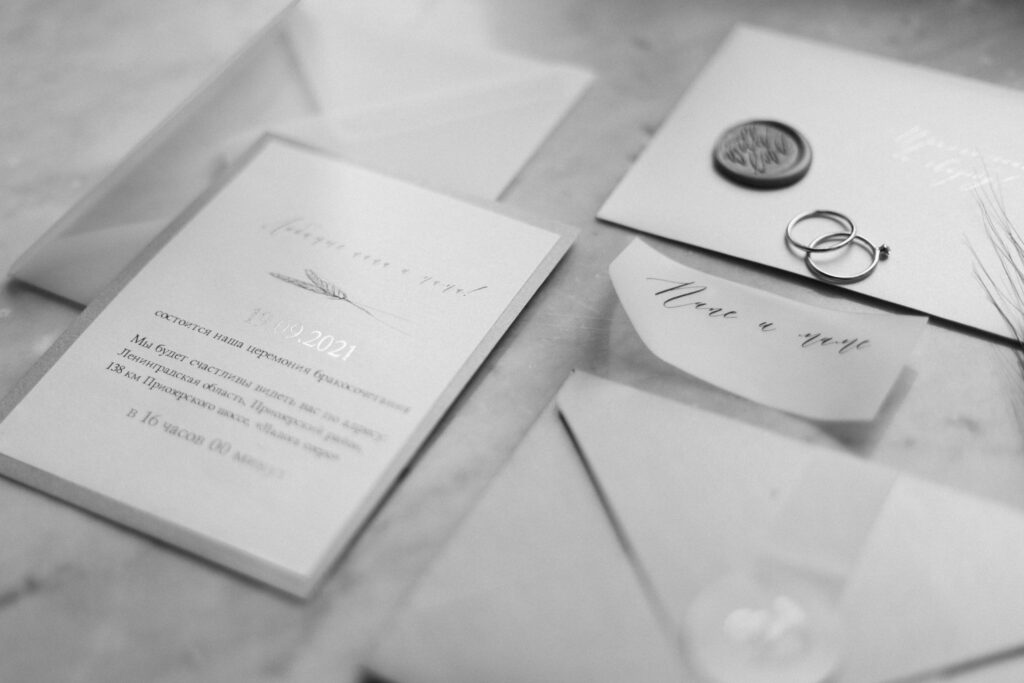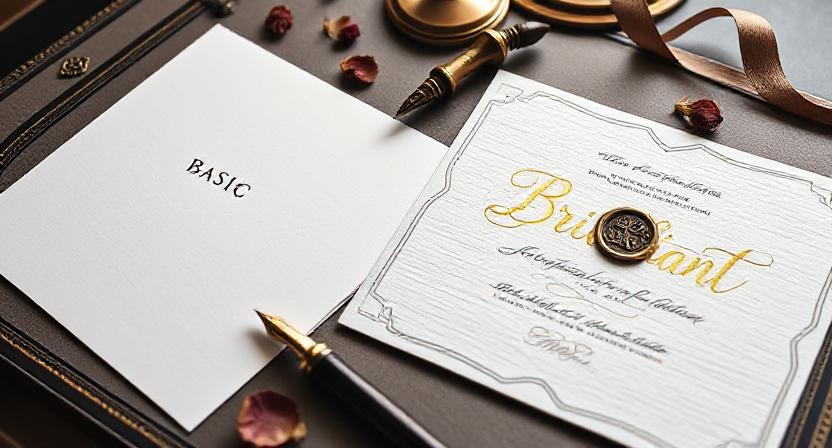An invitation is not a mere formality or a list of instructions; it is the first impression, the emotional prelude, and the most powerful tool to ensure a high attendance rate. A successful invitation doesn’t just inform—it excites, seduces, and makes the recipient feel that they will miss something unforgettable if they say no.
Here is how to transcend the basics and apply the art of persuasion to your invitations, whether it’s for a wedding, a corporate gala, or a product launch.
I. The Fundamental Structure: The 5 Pillars of Every Invitation
Every invitation, regardless of its format (digital or print), must answer the essential questions with absolute clarity.

1. The Who and the What (The Host and the Reason)
- Clarity from the Start: Who is inviting? (e.g., The newlyweds John and Mary, The Board of Directors of [Company], The host [Name]).
- The Motive: The event title must be concise and convey the purpose (e.g., Wedding Ceremony and Reception, Annual Fundraising Gala, Exclusive Product X Launch).
- Golden Tip: The formality of the language you use here defines the formality the guest should expect. A serious corporate event requires a professional and direct tone.
2. The When and the Where (Date, Time, and Location)
- Crucial Details: Day, month, year, and the start time (and, if relevant, the end time or the time of the subsequent reception).
- Complete Location: Address, name of the venue, and, if necessary, specify the room or floor.
- Golden Tip: For complex or remote locations, include a map, a Google Maps link, or concise instructions on transportation, parking, or how to access the venue.
3. The Dress Code (To Avoid Surprises)
- The lack of a clear dress code creates anxiety. Help your guests prepare.
- Elegant Communication: Use universal terms (e.g., Black Tie, Cocktail Attire, Semi-formal, Business Casual, Thematic).
- Golden Tip: For thematic events, offer a small guide or a visual mood board to inspire, rather than just impose.
4. The Response Logistics (RSVP and Contact)
- The Deadline is Sacred: Clearly state the final date to confirm attendance. You need this data for catering and seating planning.
- Clear Method: Indicate how to confirm: link to a website, email, or contact number.
- Golden Tip: Include a section to ask about food allergies, dietary restrictions, or accessibility needs. This shows care and empathy.
5. The “Extra Touch” (Useful Additional Information)
- This section manages frequently asked questions before they arise.
- Common Elements: Event website link (if available), accommodation information for out-of-town guests, gift registry or bank account details (if applicable), and policies regarding children or plus-ones.
II. The Art of Persuasion: How to Go From Basic to Brilliant

Once you have the foundations ready, it’s time to inject life and emotion. The key is to use psychology to build anticipation.
A. The Tone (The Voice of Your Event)
The tone is the soul of your event. It must be consistent with the promised experience.
- Formal: Elevated language, full sentences, use of titles and surnames (e.g., “We request the pleasure of your company…”).
- Casual and Playful: Closer tone, use of exclamations or a touch of humor (e.g., “Get ready for an epic night of dancing and drinks!”).
B. The Design (The Visual Connection)
The design validates the tone and reinforces the event’s visual identity.
- Typography and Palette: The chosen fonts and colors should reflect the decor and atmosphere. A gold script font for an elegant wedding; a bold font and vibrant colors for a product launch.
- The White Space Rule: Do not overcrowd. Good design uses white space to guide the eye and make crucial information stand out.
- In Digital Format: Use elements that you can’t use on paper: a subtle GIF, a transition animation, or a short video of the venue to generate greater engagement.
C. The Emotion (Creating Anticipation)
Event marketing neuroscience tells us that people remember how an event made them feel. Your invitation must touch an emotional chord.
- The Story Snippet: If it is a personal event, include a phrase that summarizes the journey (e.g., “After ten years, it’s time to celebrate big!”).
- The Promise of the Experience: Don’t just say what will happen; say how they will feel. (e.g., “Join us for a night of inspiration and genuine connections”, instead of “There will be networking and presentations”).
III. The Logistics of Sending (Timing and Format)
The moment you send the invitation is as important as its content.
Event Type Save the Date (Optional) Official Invitation Reminders Wedding / Large Gala 6 to 12 months before 6 to 8 weeks before 1 week before the RSVP deadline and 3 days before the event Corporate Event 2 to 3 months before 3 to 4 weeks before Weekly, until the day of the event Casual Party Not required 2 to 4 weeks before 1 week before
- The Print vs. Digital Dilemma: Use the format that best suits your audience and budget.
- Print: Ideal for very formal, personal (weddings), or highly exclusive events. It conveys weight and value.
- Digital: Practical, fast, and the best option for managing RSVP, surveys, and sending reminders. Most corporate events opt for this format.
The invitation is the gateway to your event. If you take the time to go from basic to brilliant, using the right structure and adding that touch of emotional anticipation, you will transform a simple communication into an object of desire.
Your goal is not just to inform; it is to inspire an enthusiastic “Yes!”




